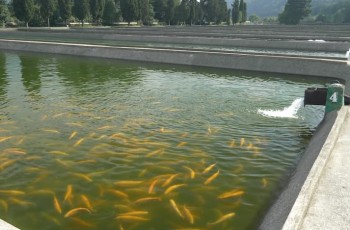Types of Hydroponic Vegetables: Benefits and How to Plant
24 December 2023

Have Sobat Honda ever heard of hydroponic vegetables? Hydroponics is a method of cultivating vegetables that no longer uses soil as a growing medium. Because of this, there are only a few types of hydroponic vegetables that can be grown.
Because the hydroponic system makes it simple to grow high-quality crops, it is regarded as a recent innovation in the agricultural industry. Vegetables cultivated hydroponically are produced by directing the required nutrients into the roots of the plants via water or other growing media, such as sand, gravel, or coconut fiber.
Vegetables grown hydroponically grow more effectively and frequently faster than those grown conventionally because they receive nutrients directly and without intervention. Because of this, a water pump that can continuously flow water is typically required in hydroponic vegetable farming in order to ensure that the plant roots have access to nutrients.
Honda Power Products offers a variety of water pumps that can be useful equipment for friends of Sobat Honda who want to start growing hydroponic crops. Vegetables grown hydroponically can thrive by maintaining the nutrient solution's oxygenation with the use of available water pump equipment.
Does Sobat Honda want to start growing vegetables hydroponically? To find out more about the different kinds of hydroponic vegetables, their advantages, and how to grow them, start by reading this article.
Benefits of Hydroponic Vegetables
Hydroponic vegetables offer a variety of interesting benefits in plant cultivation, such as allowing more efficient use of water because it can be used repeatedly in circulation techniques. This helps reduce excessive water consumption because it is only used to deliver nutrients to the vegetables. Properly distributed nutrients also make hydroponic vegetables grow faster and healthier.
The nutrients delivered produce vegetables that are often more resilient to pests and disease. The hydroponic cultivation minimizes the risk of microbial contamination that can also cause disease because it also uses soil-free techniques. Apart from that, the crop yields are also greater in a shorter time, allowing Sobat Honda to increase agricultural productivity.
Another benefit of hydroponic vegetable cultivation is that the land required does not have to be very large. The hydroponic vegetables can also be grown in limited space, indoors, or even in small, efficient containers. This is of course very suitable for Sobat Honda who live in urban areas with limited agricultural land or just want to plant the hydroponic vegetable at home.
Read Also: 7 Types Of Soil For Agriculture And Plantations In Indonesia
Kinds of Hydroponic Vegetables
Even though it looks easy to do, not all types of vegetables can be easily grown using the hydroponic method. In fact, some plants have growth characteristics that are less suitable if cultivated in a hydroponic environment. Here are several types of vegetables that can be grown using the hydroponic method:
1. Spinach
Spinach is one of the easiest types of hydroponic vegetables to grow. This vegetable has relatively small roots so it is easy to adapt to hydroponic techniques that limit root space. Therefore, spinach is a vegetable that grows quickly and can be harvested within 3-4 weeks after planting.
2. Lettuce
The hydroponically grown lettuce is an excellent indoor vegetable. Certain varieties of the lettuce, like romaine, a curly, and a seed lettuce, have relatively shallow roots and also need little room to spread out their roots, which also allow them to grow rapidly when grown hydroponically. It also takes lettuce three to four weeks in order to grow after planting.
3. Mustard Green
Still tending to be the same as lettuce and spinach, mustard greens also have shallow roots so they are easy to adapt to hydroponic techniques. The advantage of cultivating mustard greens over other hydroponic techniques is its ability to grow in cooler temperatures, making it ideal for closed environments.
4. Water Spinach
Water spinach can grow quickly because its roots are relatively small, making it suitable for hydroponic techniques that limit root space. Another advantage of cultivating kale in a hydroponic environment is the ability of this plant to adapt well to growing media such as sand, gravel, or nutrient solutions.
5. Spring Onions
The advantages of cultivating spring onions in hydroponics are their fast growth and small root size, so they can grow well in limited growing media. In a healthy hydroponic environment, spring onions often grow healthier and free from plant diseases that commonly occur in soil.
6. Cabbage
Another type of vegetable that can also be grown using hydroponic techniques is cabbage. Cabbage plants grow relatively quickly and are able in order to adapt well to planting media such as coconut fiber or sand. The cabbage can also usually be harvested within 4-5 weeks after planting.
7. Carrots
In hydroponic techniques, smaller and shorter types of carrots are usually more suitable for planting, although they may require extra care to ensure the roots continue to develop well in the growing medium. Carrots generally grow more slowly and can only be harvested after 8-10 weeks.
How to Grow Hydroponic Vegetable
After getting to know about the types of hydroponic vegetables, of course the next step is to understand how to grow hydroponic vegetables properly. Here are several ways that Sobat Honda can also do it if Sobat Honda are interested in starting hydroponic vegetable cultivation:
Read Also: 7 Tips For Choosing Quality Plant Seeds For Home Gardening
1. Preparation of Tools and Materials
Naturally, setting up the necessary equipment and supplies is the first step in growing vegetables hydroponically. These include:
-
Tubs or containers for holding water and nutrient solutions,
-
To deliver water and nutrients to plant roots, use a water pump and hose,
-
Plant seeds made of vegetables
-
customized nutrient solutions for plants.
In addition to supplies and equipment, Sobat Honda must set up a space or container for the hydroponic method. Additionally, make sure that the humidity and temperature in the area are appropriate for the growth of plants in the future.
2. Choosing Types of Vegetables that are Suitable for Hydroponics
The next step that is no less important in the discussion of growing hydroponic vegetables is choosing the type of plant that is suitable for this technique. Sobat Honda needs to know that, some of the plants that are generally suitable for hydroponic techniques are the hydroponic vegetables that have fairly compatible roots and do not require a very large root space, as stated previously.
Success in growing hydroponic vegetables also depends on knowledge of the particular type of plant Sobat Honda chooses, including ideal growing conditions, nutritional requirements, and estimated harvest time.
3. Preparing Nutrient Solution
Preparing the nutrient solution that really suits the type of vegetable is very important for the next step. This nutrient solution plays a role in providing all the nutrients needed by vegetables because in the hydroponic technique plants cannot take nutrients from the soil.
As specified by the guidelines or recommendations for the particular type of vegetable being grown, the nutrient solution should be properly mixed. The nutrient solution should contain various microelements along with elements like potassium, phosphorus, and nitrogen.
4. Planting Seeds
After preparing the vegetable seeds and nutrient solution, Sobat Honda can start planting the seeds in the growing medium that has been prepared. Make sure that the seedlings are healthy and that the plant roots can easily reach the nutrient solution.
Friends of Honda must carefully plant the seeds in the medium, making sure they settle down firmly. It is important to keep an eye on the growth of the roots during the initial weeks of hydroponic techniques, since robust and well-developed roots are essential for successful growth.
5. Hydroponic Vegetable Care
Once the seeds have been properly planted, carry out daily monitoring to ensure the nutrient level in the solution remains stable, as well as maintaining environmental conditions such as temperature and humidity at optimal levels.
Pruning vegetables and monitoring for pests are also very important to maintain plant health. Apart from that, Sobat Honda also need to maintain the oxygenation level of the nutrient solution so that the plant roots continue to get an adequate oxygen supply.
Friends of Honda can easily begin growing hydroponic vegetables at home or as a new business with the help of the comprehensive guide provided above. Choose one or two varieties of hydroponically grown vegetables based on Sobat Honda tastes if Sobat Honda would like to give it a try first.
Read Also: 7 Ways To Determine Fertile Soil
However, before starting to plant hydroponic vegetables, make sure Sobat Honda have a high-quality water pump machine to support the flow of nutrients to the roots of hydroponic plants. Various types of water pumps from Honda Power Products could be the right choice for Sobat Honda who are interested in starting this cultivation.
For this reason, Sobat HondaF, don't miss the opportunity to improve the quality of Sobat Honda Hydroponic vegetable harvest with a water pump machine from Honda Power Products!

Honda Power Products Indonesia
Honda Power Products menyediakan mesin serbaguna, generator, pemotong rumput, pemotong sikat, pompa air, dan mesin tempel.



